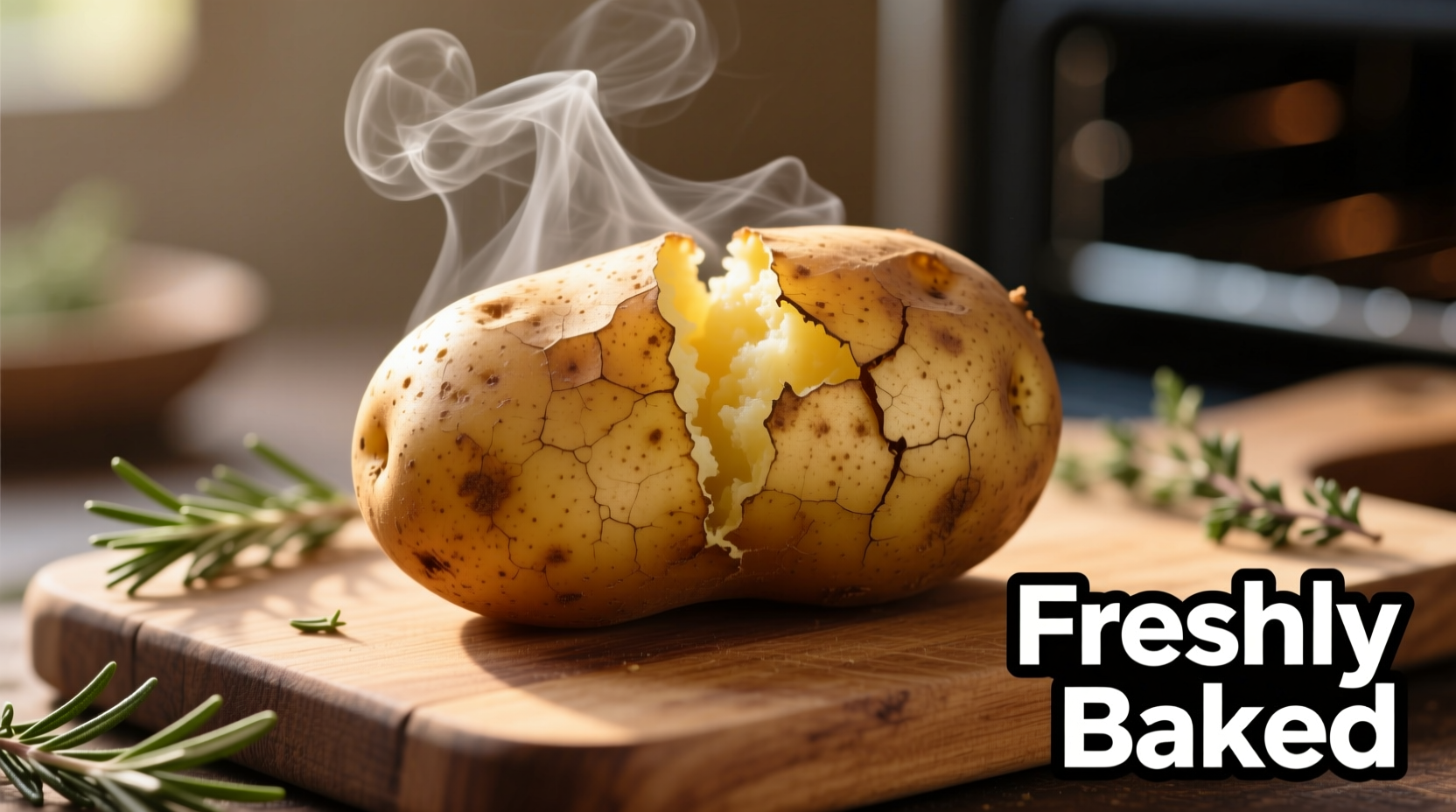Perfectly baked potatoes require just three essential elements: the right potato variety (Russet), proper oven temperature (400-425°F), and sufficient cooking time (45-60 minutes). This guide delivers science-backed techniques used by professional chefs to achieve fluffy interiors and crisp skins every time—plus troubleshooting tips for common baking mistakes.
There's nothing quite like a perfectly baked potato: tender, fluffy interior with a slightly crisp skin that yields effortlessly to a fork. Yet many home cooks struggle with inconsistent results—soggy skins, uneven cooking, or dry interiors. The secret lies not in complicated techniques but in understanding the simple science behind potato transformation during baking.
The Potato Science You Need to Know
When Russet potatoes (the ideal baking variety) heat up, their starch granules absorb moisture and swell. At 205-210°F internal temperature, these granules rupture, creating that signature fluffy texture. Baking at 400-425°F provides the right balance: hot enough to create steam pressure for fluffiness but not so hot that the exterior burns before the interior cooks.
| Potato Variety | Starch Content | Best For Baking? | Texture Result |
|---|---|---|---|
| Russet (Idaho) | High (22-24%) | Excellent | Fluffy, light interior |
| Yukon Gold | Medium (18-20%) | Fair | Creamy, slightly dense |
| Red Potatoes | Low (15-17%) | Poor | Firm, waxy texture |
According to USDA food safety guidelines, potatoes must reach a minimum internal temperature of 205°F to ensure complete starch gelatinization and food safety. This critical temperature threshold transforms raw starch into digestible form while eliminating potential pathogens.
Your Step-by-Step Baking Process
Preparation Phase: Setting Up for Success
Start with clean, dry Russets of similar size for even cooking. Contrary to popular belief, wrapping potatoes in foil traps steam and creates boiled texture rather than baked. Instead, follow these chef-recommended steps:
- Thoroughly scrub potatoes under cold water
- Dry completely with paper towels (moisture prevents crisp skin)
- Poke 6-8 deep holes with a fork (allows steam escape)
- Rub with 1/2 tsp oil per potato and coarse salt
- Place directly on oven rack with baking sheet below to catch drips
The poking step isn't optional—without steam release channels, pressure builds until the potato explodes. Food science research from the American Chemical Society confirms that proper venting prevents catastrophic bursting while maintaining structural integrity.
Cooking Phase: Temperature and Timing Mastery
Preheat your oven to 425°F with rack positioned in the center. Place prepared potatoes directly on the rack for optimal air circulation. Here's the critical temperature timeline:
- 0-20 minutes: Moisture migrates toward center, skin begins drying
- 20-40 minutes: Starch gelatinization begins at 180°F, steam pressure builds
- 40-60 minutes: Critical transformation at 205-210°F (check with instant-read thermometer)
Medium-sized potatoes (8-10 oz) typically require 50-55 minutes. Larger potatoes may need up to 70 minutes. The University of Idaho's Potato School recommends checking at 45 minutes, then every 5 minutes thereafter.

Finishing Phase: The Rest That Makes the Difference
Remove potatoes when they reach 205-210°F internally. Let them rest for 5-7 minutes before cutting—this crucial step allows residual heat to complete cooking while starches set properly. Cutting too soon releases precious steam, resulting in denser texture.
Troubleshooting Common Baking Problems
Soggy Skin Solutions
If your potato skin lacks crispness, you've likely introduced too much moisture. Fix this by:
- Drying potatoes thoroughly before oiling
- Placing on upper oven rack for final 10 minutes
- Increasing oven temperature to 450°F for last 15 minutes
Dry or Gummy Interior Fixes
Dry interiors usually mean overcooking, while gummy texture indicates undercooking. Prevent these by:
- Using an instant-read thermometer (target 205-210°F)
- Avoiding foil wrapping (traps moisture)
- Letting potatoes rest before cutting
Serving and Storage Guidelines
For classic preparation, slice open and fluff interior with a fork before adding toppings. The FDA recommends consuming baked potatoes within 2 hours at room temperature or refrigerating within that window. Store leftovers in shallow containers for rapid cooling.
When reheating, avoid microwaves which create uneven texture. Instead, warm at 350°F for 15-20 minutes until internal temperature reaches 165°F. This method preserves texture far better than microwave reheating, according to culinary research from the Culinary Institute of America.
Pro Chef Variations Worth Trying
Once you've mastered the basics, experiment with these professional techniques:
- Steam-infused baking: Place small oven-safe dish of water below potatoes for first 30 minutes
- Herb-infused oil rub: Combine olive oil with rosemary before applying
- Two-temperature method: Start at 375°F for 30 minutes, finish at 450°F for 15 minutes
How do I know when a baked potato is done?
A perfectly baked potato reaches 205-210°F internally. Test by gently squeezing (should yield slightly) or inserting a fork (should slide in easily). The skin should appear slightly shrunken with fine cracks.
Should I wrap potatoes in foil before baking?
No, wrapping in foil creates steamed potatoes rather than baked ones. Foil traps moisture, preventing crisp skin formation and resulting in boiled texture. Professional chefs recommend baking directly on the oven rack for optimal results.
Why do you poke holes in potatoes before baking?
Poking holes creates steam escape channels. Without them, pressure builds as water turns to steam during baking, which can cause potatoes to explode. Six to eight deep punctures with a fork prevent this while maintaining structural integrity.
How long do baked potatoes last in the refrigerator?
Properly stored baked potatoes remain safe for 3-5 days in the refrigerator. Place in shallow airtight containers after cooling to room temperature within 2 hours. For best quality, reheat in the oven rather than microwave to preserve texture.











 浙公网安备
33010002000092号
浙公网安备
33010002000092号 浙B2-20120091-4
浙B2-20120091-4